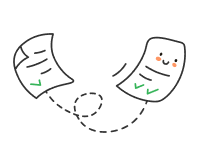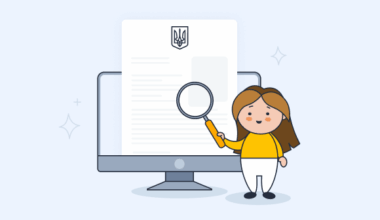In recent years, working remotely has become the most common phenomenon in Ukrainian business. During the COVID-19 pandemic it was conditioned by quarantine restrictions, and during the war period it remains a secure form of work organization in companies. However, this places a great burden on HR workers.
The IT sector has a lot of experience in organizing the remote work of employees. It may be useful for companies working in other areas of business. In particular, the IT company EVO uses the Online Document Exchange services for the HR accounting of employees. Let’s consider what advantages this gives to business and how companies can implement electronic HR document workflow.
How does a company benefit from the HR ODE?
The electronic HR document workflow is the optimal solution for organizing the remote work of employees. However, there are more benefits than that. Let’s consider the main ones.
- The workload of HR department employees decreases. If the company has a branched structure, each HR employee controls the HR document workflow within one or more divisions. It takes a lot of time and effort to prepare and approve paper documents. Most of these processes are automated with the introduction of HR ODE.
- The employee of the company saves his/her working time. The employees of the company also spend a lot of time processing personnel documents. The automation of personnel document workflow allows an employee to save time for his/her direct work.
- Personnel processes speed up. According to legal requirements, a HR document must be signed before the date specified in it. The HR ODE allows employees to be transferred to other positions more quickly, vacation requests to be processed in a timely manner, etc.
- The risk of mistakes in the documents decreases. The HR ODE systems use document templates where data contained in the company’s accounting system is filled in automatically.
As a result, the introduction of the e-document workflow is beneficial not only to HR-department employees, but also to the business as a whole. Let’s consider some steps that a company can take in this direction.
What is the first step to start HR ODE?
Before introducing HR ODE, the head of the HR department must clearly understand what processes it will help accelerate in the company. Preparations consist of the following steps.
The HR processes audit
Before implementing the electronic HR document workflow, the head of the HR department should determine existing HR processes in the company, which ones can be automated using ODE services, and what benefits this will bring to business.
The audit will reveal which documents are repeated in the company and help reduce their amount. It is also important at this stage to take into account legal nuances: the retention period of documents, situations when a company provides documents at the request of other organizations.
Internal regulations development
These documents indicate which HR processes will be performed in electronic form. The company should inform all employees about the implementation of the HR ODE and obtain their consent to such changes. This step is necessary in order to align HR processes with legal regulations.
Technical implementation
The company chooses an ODE service to be used in the work of the HR department, IT specialists integrate it with the internal accounting system. After that, the necessary documents can be added to the system.
Sometimes the company does not need to convert all of its HR documentation into electronic form. Therefore, it is possible to automate only part of the documents. For example, companies that experience high staff turnover will benefit from automating the hiring and firing processes. An HR employee can track in the accounting system whether all necessary documents have been signed, and whether there are grounds for hiring or firing an employee. After all, it saves the company from unwanted legal consequences.
There are some processes that are time-consuming for HR workers in any company, such as the formalization of vacations. When using the ODE service, it literally takes a couple of minutes.
For instance, the EVO company has converted all HR documents related to hiring, transferring, dismissing employees, granting vacations, etc. into electronic format. The only exception is the documents of a large volume, which are signed once a month or of a long period (for example, staff schedule, timesheets, etc.).
Also, to comply with legal norms, the documents stored for more than 10 years after signing in electronic format must be printed and stored also in paper form.
How long does it take to switch to the HR ODE?
It all depends on the structure of the company and the number of its employees. The bigger the company, the more HR documents are circulated, and if there are a lot of departments, there are more processes. The transition to ODE under such conditions will require more time.
For example, the EVO company has more than 1,000 employees. The preparation stage for the implementation of ODE here took three months. It included an audit of personnel processes, development of internal orders on the transition to an e-document workflow, and the conversion of documents into electronic format.
Organizational processes lasted another month. The HR department informed all employees about the transition to the e-document workflow. Within a month they had the opportunity to test the system so that the transition to ODE would be gradual and hassle-free.
How are electronic HR documents approved?
Each company approaches the approval of personnel documents individually. For example, in some companies only the direct manager approves an employee’s resignation letter, while in others it is approved by top managers. Each approach depends on the company’s processes and internal policies.
Regardless of how difficult the approval of personnel documents is, it can be done more quickly by using ODE services. For example, at the EVO company, personnel documents are uploaded to the system, and then an employee of the HR department determines which employee should approve it. Using the accounting system settings, you can set the number of approvals and signing deadlines. Employees attach electronic signatures to the document which significantly speeds up the approval process.
As you can see, the e-document workflow simplifies the work of the HR-department, as well as saves time for all employees. It allows you to streamline business processes throughout the entire company.






